Everyone’s talking about monsteras! These houseplants have some of the most impressive-looking leaves, coated in slits and holes to make them especially unique. The star of the room, learn how to care for your prized monstera plant.
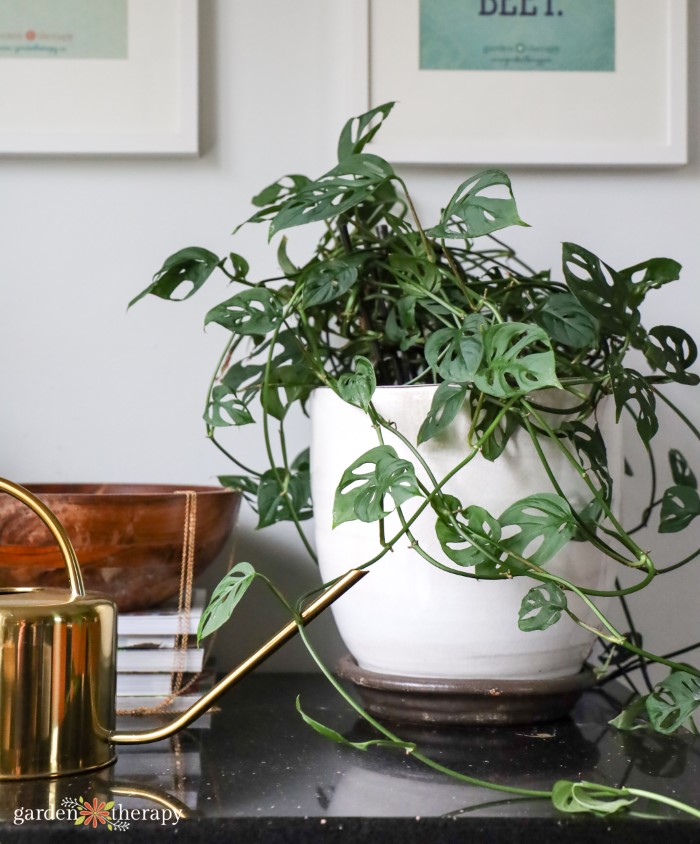
The plant world had no idea what was in store for them the second interior designers started posting photos of monstera plants on Instagram. Arguably the most popular houseplant of the decade, everyone and their cousin seems to have a monstera plant somewhere in their home.
And for good reason! These plants sure know how to draw the eye and become the focal point of the room. Their dramatic leaves add a tropical flair that has inspired prints from bedsheets to wallpaper. You know exactly what I’m talking about!
Join in on the monstera craze and learn how to care for these tropical beauties.
This post covers…
- Meet the Monstera Plant
- Types of Monstera Plants
- Monstera Plant Care
- Location
- Light
- Water
- Soil
- Fertilizer
- Common Issues
- Propagating Your Monstera Plant
- Frequently Asked Questions About Monstera Plants
- More Houseplant Care Guides
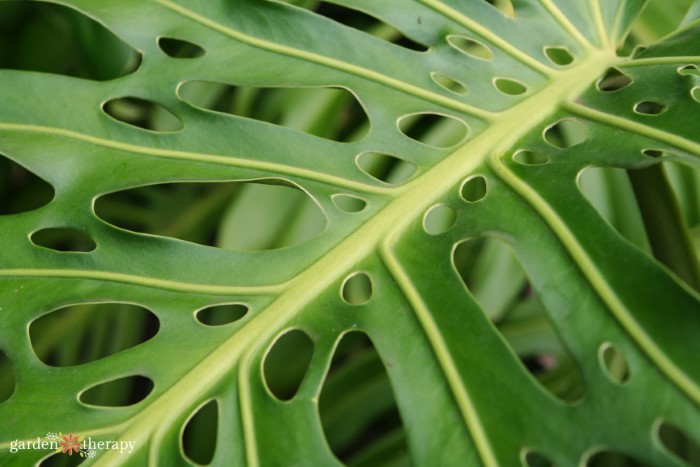
Meet the Monstera Plant
Native to the rainforests of Central America, monstera plants come from the Araceae family. They’re known for their dramatic leaves with slits in them. Leathery and glossy, they make a statement in whatever room they’re in.
Their signature slits or holes are known as fenestrations. Outdoors, the slits allow rain and sunlight to go through and reach the roots and leaves below. Due to its holes, the monstera has also earned its alternative name of swiss cheese plant.
Out in the wild, you might see the monstera plant flowering. Tan or cream in colour, they’re popular with the bees and butterflies and turn into a fruit with rich and delicious taste. However, monstera houseplants won’t flower or fruit!
Monstera can grow fast, up to 1-2 ft a year. They can get 2-3 ft wide and up to 3 ft tall. Natural climbers, they sprout many aerial roots in addition to their leaves.
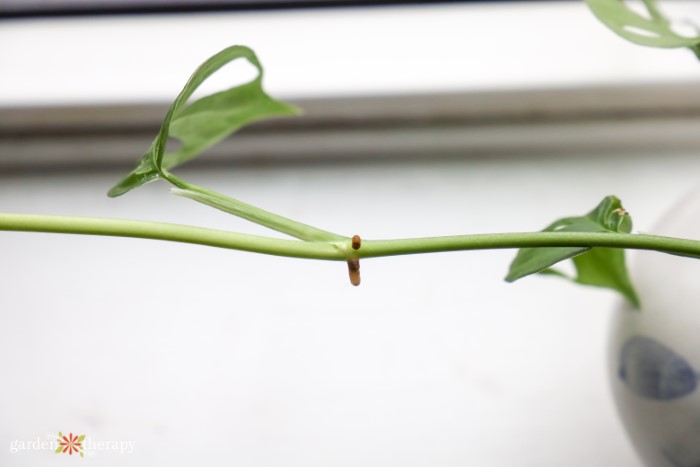
Types of Monstera Plants
With over 48 species of monstera plants, there’s an incredible variety of monstera types out there. In fact, many are often mislabelled because they change so much in appearance as they grow. Here are some popular varieties that you
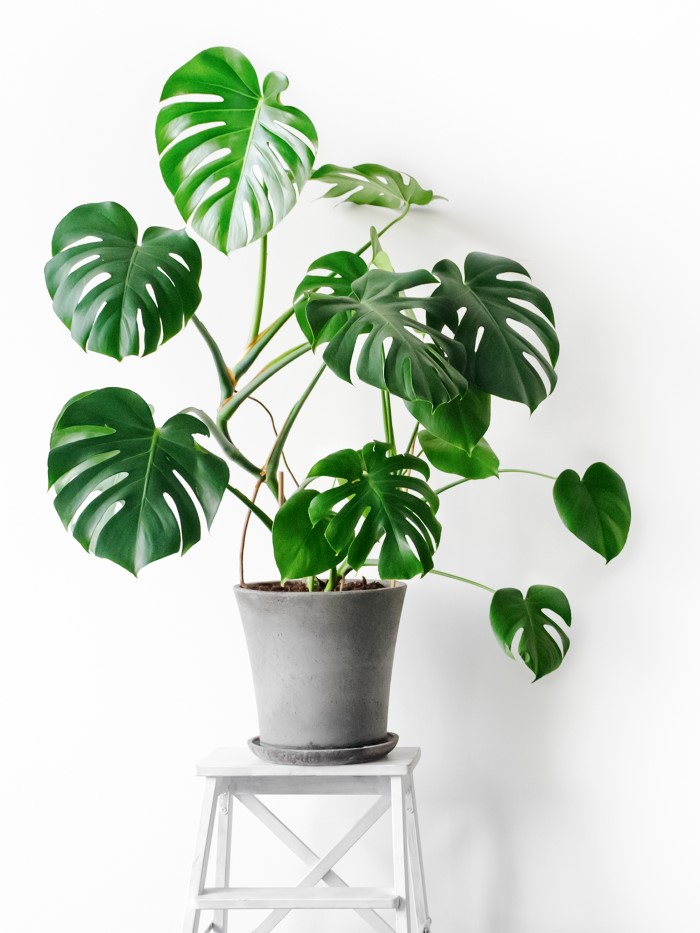
- Monstera deliciosa. The most popular type out there and the one you’re most likely to find at your local garden centre. They have the classic large, glossy green leaves with slits in them.
- Monstera borsigniana. A variation of deliciosa. At first, it’s hard to tell the difference between the two types when young. However, borsigniana are smaller and grow faster. The slits tend to be in rows rather than at random like the deliciosa.
- Monstera variegata. These monsteras are very popular and can be difficult to find and therefore more expensive. They’re known for a distinct colour variation of white and cream that almost looks painted on.
- Monstera adansonii. Smaller than most of the others, the adansonii appears more vine-like. The holes stills take up about 50% of the leaf, with some appearing round and others more narrow.
- Monstera dubia. Also known as the shingle plant, the dubia has smaller leaves with light and dark green veining. This is also a rarer variety; their leaves appear almost variegated.

Monstera Plant Care
Monsteras aren’t finicky plants so luckily their care is pretty straightforward! That being said, every plant has its ideal lifestyle so here are some tips on proper monstera plant care.
Location
Swiss cheese plants add a dramatic flair wherever you place them, be it your living room or office. When placing it, keep in mind that they don’t like cold drafts and heaters. Their optimal temperature is 60-80°F (15-27°C). They don’t like to go below 55°F (12.8°C).
In the wild, they like to climb upwards. To encourage this growth, give them a moss pole. Otherwise, they will grow outwards and take up quite a bit of room.
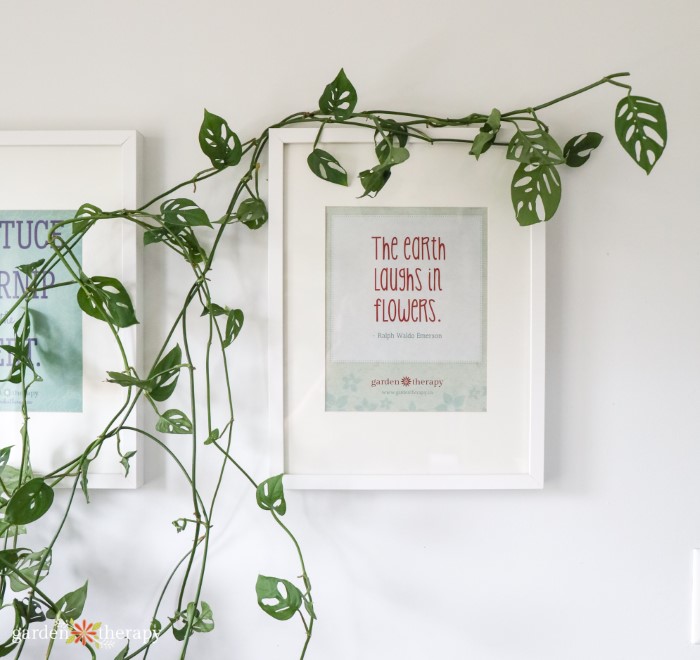
Light
Monster plants will happily sit in a not-so-sunny corner. They’re fairly tolerant of low light which makes them great for the areas of your home that need a little brightening up with some greenery.
If you really want your monstera to thrive, place it in bright indirect light. Careful not to place it in direct sun as this can burn the leaves.
Water
Monster plants should be watered when the top 2-3 inches of the soil are dry. Use your finger and stick it in the soil to test for dryness. When it’s time to water, water thoroughly until you see water draining through the bottom holes. Toss out any excess water from the saucer.
You want your monstera to dry out completely between waterings. In the summer you will need to water fairly regularly and only occasionally during the cool season.
Coming from rainforests, monstera plants like a fair amount of humidity. You can mist your plant once a week in the morning for extra humidity. You can make a humidity tray to help.

Soil
Use well-draining soil designed with houseplants in mind. You should keep the soil somewhat moist, but it should be in a pot with drainage holes to avoid any wet feet (which can lead to root rot).
Fill your soil in a deep pot to accommodate the roots. The pot should be a few inches wider and deeper than the pot it came in.
Fertilizer
During the growth season, from spring to summer, fertilize your swiss cheese plant once a month or every other week. Use a water-soluble fertilizer and always apply it to wet soil.
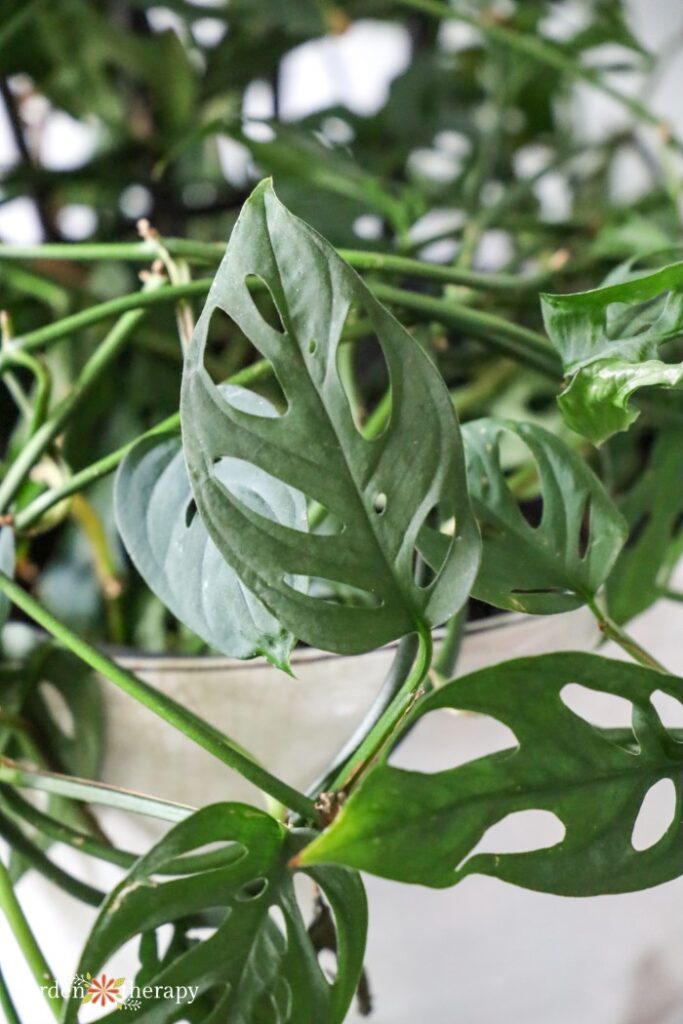
Common Issues
Yellow leaves are a sign of improper watering. Only water your swiss cheese plant when the top is dry and water thoroughly in one go. Yellowing leaves may also indicate it’s not getting enough light.
Leaves with brown edges mean the plant needs more humidity. If left unresolved, they will also turn yellow before falling off.
Limp leaves mean the plant is likely not getting enough water. Give it a good soaking in the bathtub and let all the excess water drain out.
The aerial roots can also get unruly. While you can trim them, it’s best to try and tuck them back down into the pot.
Because of their large leaves, they can get dusty. To remove dust, wipe them down with a damp sponge or paper towel.
If the leaves on your monster aren’t splitting, it likely means it’s not getting enough light. Try moving it to another location and also pay attention to your watering schedule.

Propagating Your Monstera Plant
The easiest way to propagate monstera plants is by taking stem cuttings and placing them in water. Here’s how to propagate them:
- Take your cutting using sanitized pruners. The cutting could be cut below the node (where a leaf has or will emerge), have an aerial root, and at least 2 leaves.
- Place your cutting in a vase or glass of water.
- Change the water every 2-3 days. After a couple of months, the cutting should have roots long enough to plant.
- Plant your monstera in new potting soil. Add in a moss pole for support and future climbing.
You can also propagate by air layering, but this method is more difficult for beginners.

Frequently Asked Questions About Monstera Plants
Monstera plants are mildly toxic for humans and pets. If consumed, it can cause irritation of the mouth and stomach.
As far as houseplants go, the monstera is fairly hardy. If you give them the right light and water, they’ll be happy as a clam.
A monstera that is happy and thriving will have lots of new growth and split leaves. Unhappy monsteras will have yellow leaves, brown tips, no split leaves, slow growth, and might sprawl to try and reach sunlight.
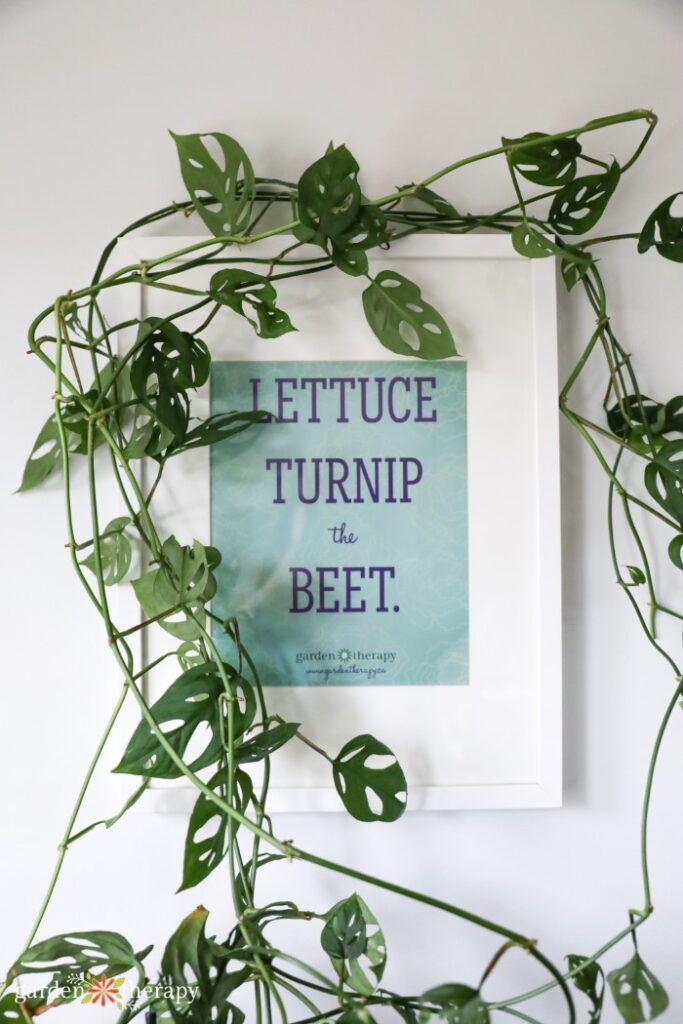
Do you have any more questions about monstera plants? Leave them in the comments down below and I’ll do my best to answer!

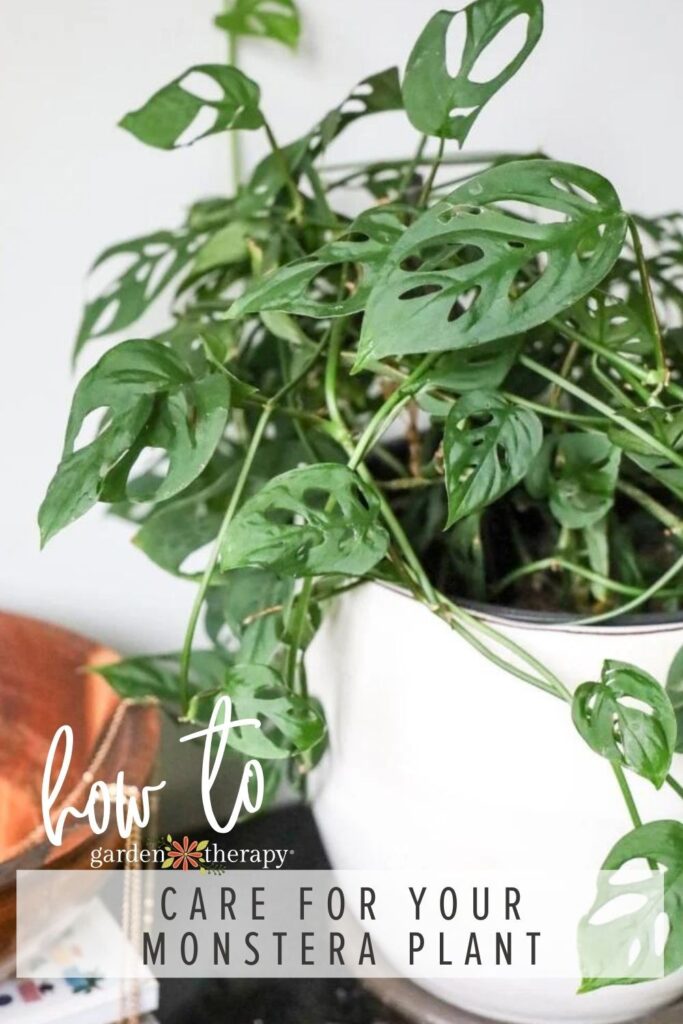



My monstera is on a climbing stick. I have one that you can keep adding sections to. My question is should I just let it fall and stop adding sections to the climbing stick? Mine is very young, about a year old but is already almost 2 feet tall. Can Monstera grow in hanging pots as well?
Thank you,
Rena
It depends on which one you have. The vining ones will grow up as tall as you let them! I have mine hanging, that looks really nice. You can wind some of the wines around each other for more fullness or prune them to keep the plant manageable.
My monstera is healthy but plagued with spider mites(I think). They are black, do no damage. I have tried sticky sticks, vinegar and soap in a bowl. They recede
And then a week later are back.
I even changed the soil and added diametacious earth.
Any suggestions?
Hi Trudy, put the whole plant in the shower and give it a good wash, wiping off all the leaves. This should help.
Hi! I took a clipping from my monstera adansonii and propogated in water until it had three 4 inch long roots then transferred to soil… How long should it take to see new growth up from the soil?